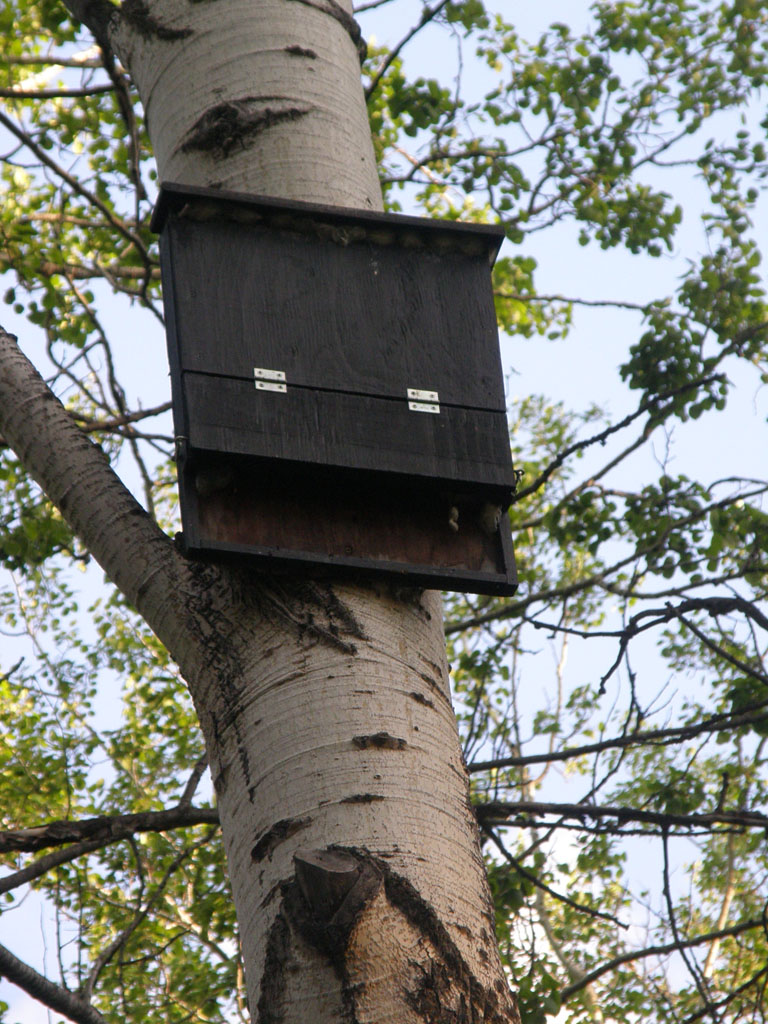Ongoing Project
Bat Monitoring
Local Bat Monitoring
The Fort McMurray region is home to five bat species: the little brown myotis (little brown bat), northern myotis, silver-haired bat, hoary bat, and the eastern red bat. Although other species may be found, such as the big brown bat, their presence near Fort McMurray has not been confirmed. The two myotis species live in Alberta year-round, however, we know of only a few places where these bats spend the winter hibernating. The hoary and eastern red bats will migrate as far as the southern United States and Mexico to spend the winter. The silver-haired bat also migrates south, but our bat research in the Fort McMurray region suggests that some may also overwinter closer to home.
"We encourage anyone who finds a bat or a roosting location to contact us or the ACBP and seek professional guidance rather than attempt to handle these bats or remove them from their roost locations."
There are two initiatives in Alberta that provide opportunities for the WBWRI to monitor bats and contribute data to help conserve these animals. The Alberta Community Bat Program (ACBP) conducts research and provides many resources that can answer questions about bats. The WBWRI can participate in the ACBP by identifying and monitoring where bats are roosting, including natural roost locations, under bridges, or in buildings. The North American Bat Monitoring Program, or NABat collaborates with communities and individuals across the continent to gather data for assessment of bat population status and trends. We intend to collect acoustic data using the NABat protocol in the Fort McMurray region as part of our contribution to this initiative.
There are four locations near Fort McMurray where we will be deploying acoustic recording equipment that will record the echolocation calls of foraging bats in late June or early July each year. Our members will have the opportunity to learn how to identify these electronic bat calls to species and understand how these data are being used to estimate species trends.

